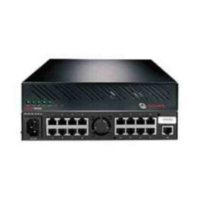Chapter 5: CPS Appliance Commands 47
Access right: none needed
Access level: all
Syntax
PORT HISTORY
When you are in port history mode, you may issue the commands listed in Table 3.4 on page 28.
Examples
The following command accesses the serial port’s history mode.
> port history
In history mode, the following command searches the history buffer in the downward direction for
the string “connected to,” ignoring case.
PORT HISTORY > s -d -i “connected to”
Port Logout command
The Port Logout command terminates the CPS appliance session on a specified port.
Access right: USER
Access level: ADMIN or APPLIANCEADMIN
Syntax
PORT <port> LOGOUT
Port Set command
The Port Set command changes serial port settings in the CPS configuration database. At least one
keyword parameter and value must be specified. Some changes become effective upon the next
connection to the port.
For more information, see Configuring Serial Port Settings on page 11.
Access right: SCON or PCON
Access level: ADMIN or APPLIANCEADMIN
Syntax
PORT [<port>|ALL] SET
[TD=<device>] [NAME=<name>] [BAUD=<baud>] [SIZE=<size>] [PARITY=<parity>]
Table 5.7: Port Logout Command Parameter
Parameter Description
<port> Port number in the range 1-8 for a CPS810 appliance or 1-16 for a CPS1610 appliance.

